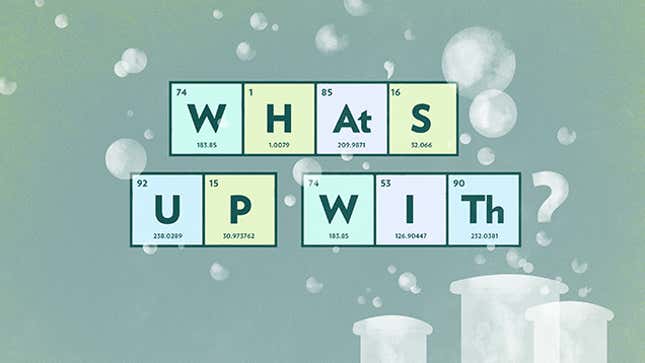What's Up With Triclosan?
In Depth

If you’ve ever used a public toilet, watched someone eat on the subway, or had a toddler wipe their nose on your pants, you understand the desire to rub anti-bacterial soap all over your body. I’m not even a clean person, but after seeing up close and personal how much poop actually winds up in a baby’s hair, I’ve become the Howard Hughes of motherhood. (Just the paranoia and OCD part, not the wealth.)
But all that anti-bacterial soap might not actually be helping you clean yourself of the scum of the unwashed masses. Anti-bacterial soaps, body washes and some toothpastes contain an ingredient called triclosan. Triclosan is the “anti” in the anti-bacterial. It’s a synthetic chemical compound that got its start in hospitals and has made its way to the consumer markets because we have all become germaphobes.
But, while being clean sounds like a good idea, the FDA is currently investigating whether to ban triclosan because it might be doing more harm than good.
So, first, before we talk about how triclosan is a little jerk, you need to understand how it works on bacteria. To simplify, the little bacteria cells on your hands have a little shell made of lipids (that’s a fancy word for “fatty stuff”). All cells do. The cells need this wall for protection, communication and transporting good things in and bad things out. The wall is constantly changing. I think the phrase my high school biology teacher used was “a fluid mosaic,” which is a lovely term. Triclosan messes up the enzymes (proteins) that help those cell walls grow.
Now, triclosan is very specific in how it kills bacteria, which is good, because you don’t want it just killing cells willy-nilly. But this specificity is also bad, because that means that bacteria remembers triclosan. And triclosan sticks around in bacteria, inside those enzymes, long enough to be remembered. Which is good, because it sticks around and helps clean you. But bad because, well bacteria, remembers. Bacteria is like your little sister. You can pick on her for only so long before she grows up one day and wreaks a terrible revenge. Except, bacteria doesn’t just steal your clothes. Bacteria will kill you. (I don’t know, maybe your sister will kill you too. I’m sorry. Can you find somewhere safe?)
You’ve all heard about drug-resistant bacteria? Super bugs? Well, recent studies have shown that triclosan is contributing to that troublesome development. Also, since triclosan sticks around in bacteria, when those cells get washed down your drain they are just hanging out in the environment. What does that mean? Well, no one knows exactly. A University of Minnesota study found that triclosan breaks down in the lakes and rivers and makes dioxin. Dioxin is a pollutant that is linked to cancer in studies on animals. Although the link to cancer in humans hasn’t been clearly established, the EPA recommends limiting exposure.
Triclosan also reacts with the chlorine in water and makes chloroform. And besides being the evil villain drug of choice, chloroform is also a carcinogen and can cause kidney and liver damage.
So, considering all of these downsides, what is the upside? Well, triclosan does help fight gingivitis. But ultimately, the FDA reports that triclosan isn’t really helping you more than a thorough hand washing. On the FDA website, Colleen Rogers, Ph.D., a microbiologist at the FDA notes that there is no clear evidence that triclosan is getting you any cleaner than plain old soap and water or anti-bacterial hand sanitizer. That’s right, triclosan is not used in alcohol-based hand sanitizer. (Check the ingredients.)
In Minnesota, the government has recently banned triclosans. (But they still continue to eat hot dish with loads of canned cream of mushroom soup, go figure.) Crest is playing it safe and making toothpaste without triclosan, using an ingredient called stannous fluoride instead.
Bottom line: With a lot of downsides and nothing really to recommend it, I’m eschewing triclosan, stocking up on Purel, eschewing human contact and the warmth of love.
Next up: Sulfates! Previously: Parabens?
Illustration by Tara Jacoby.